Simon Rogers | May 20, 2014 |
You can create a wide range of dungeons and floorplans with CC3 and its add-ons and symbol sets. This article shows you a selection, and the software you need to create them. Dungeon Designer 3, Symbol Set 2 and Symbol Set 4 have an extended set of dungeon symbols, the Annuals and CC3 have a more restricted selection.
While it’s featured in Cartographer’s Annual Vol 1, this inn is created with CC3 plus Dungeon Designer 3 (DD3).

Tendrill’s Oak Inn – created with CC3 and DD3
This next four images were created with Symbol Set 2: Fantasy Floorplans plus CC3.

Temple of the Fire Demon

Gothic Cathedral
A close up of the cathedral.
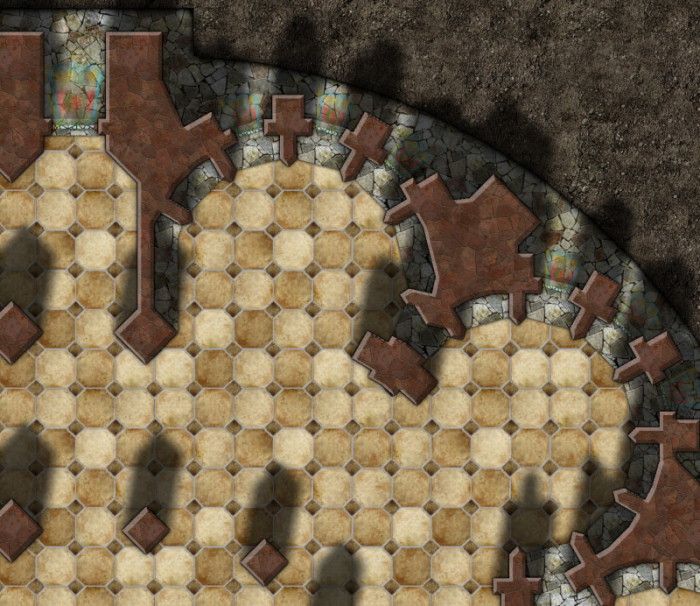
Cathedral Close-up
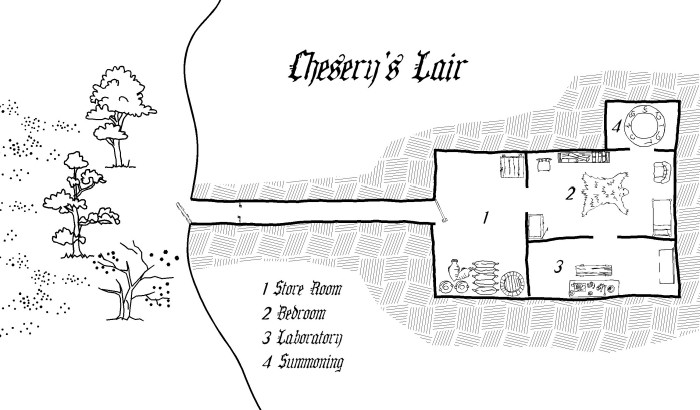
Chesery’s lair
Another black and white style created with CC3 plus Cartographer’s Annual Vol 4
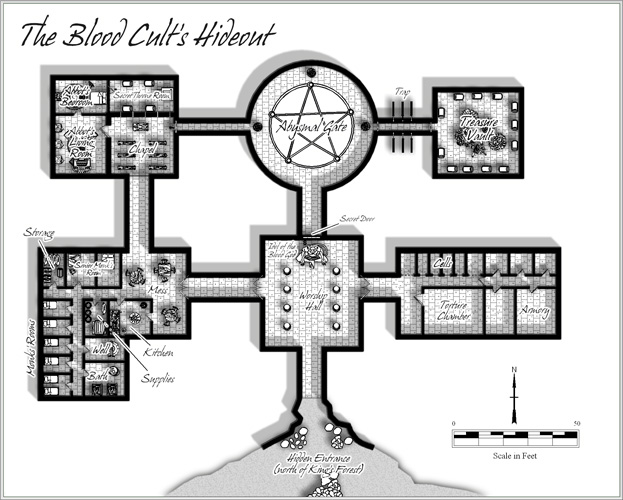
The Blood Cult’s Hideout
This map was created by master cartographer Jon Roberts using Cc3 with Cartographer’s Annual Vol 5.
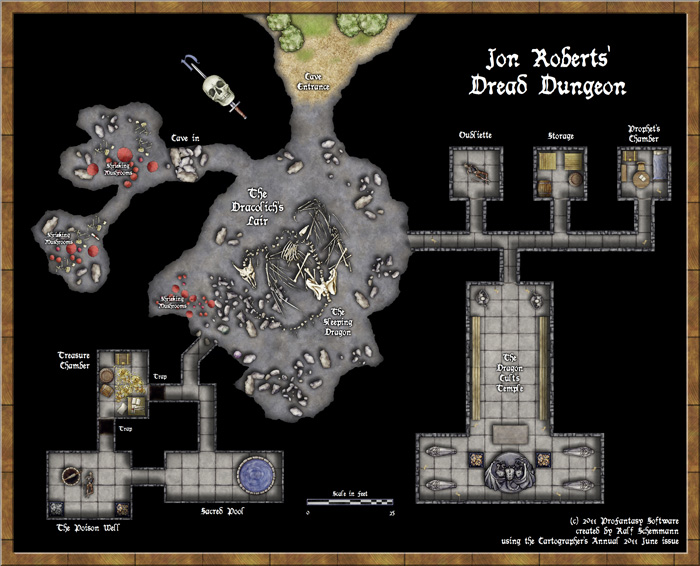
Jon Roberts Dungeons – Jon Roberts Dread Dungeon
This vertical dungeon was created with Cc3 and Cartographer’s Annual Vol 5.
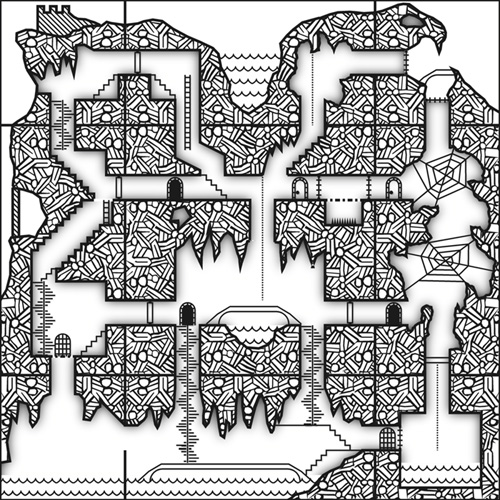
If you want 3D view, this amazing isometric view created by Herwin Wielink is for you.

Isometric Dungeon
Here are a selection of images from our latest and greatest symbol set – Symbol Set 4: The Dungeons of Schley.
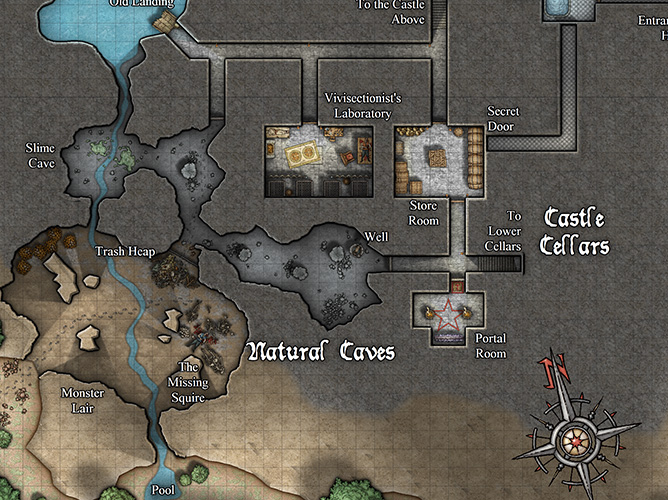
Dungeons of Schley
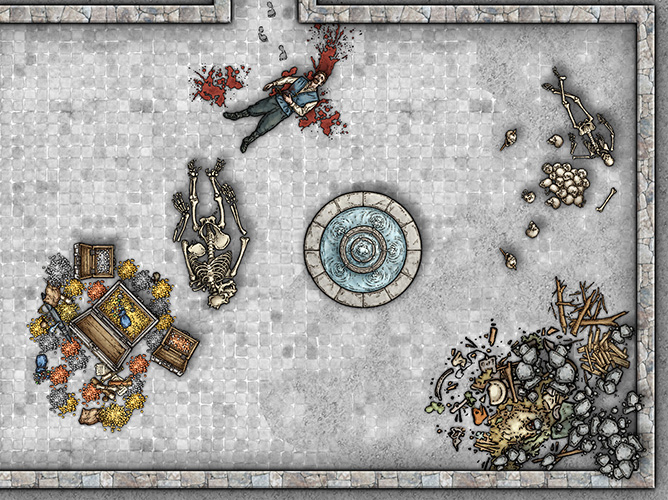
Dungeons of Schley – Detail
And finally, for that old-school look we have the The Cartographer’s Annual Vol 1 style feature in “how to create a drawing style”
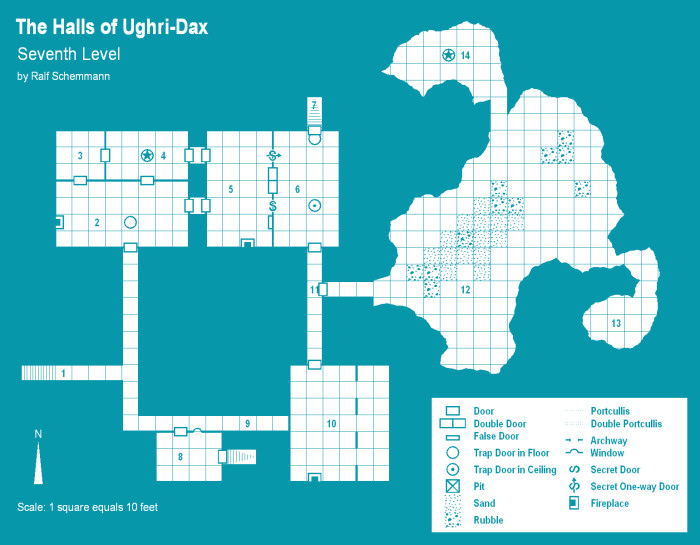
Old School Dungeon
Simon Rogers | May 19, 2014 | historical
ProFantasy’s Software allows you to create a wide array of maps in historical styles, from Mercator to medieval strip maps. This article shows examples and lets you know which software is required in addition to CC3 to create them.
If there are any historical styles you’d like us to match, let us know in the comments.
This Mercator-style map captures the flair and style of 16th and 17th century hand-coloured maps. Those centuries – the so-called “Age of Exploration” – were an era of immense European exploration and expansion and the art of cartography flourished to document and publish the newly discovered information on the shape of the world.
This map was created with the Mercator Historical Style from Annual Vol 1.

This map emulates the famous town and city maps of British cartographer John Speed (1542-1629). It was created with the John Speed City style from The Cartographer’s Annual Vol 1.
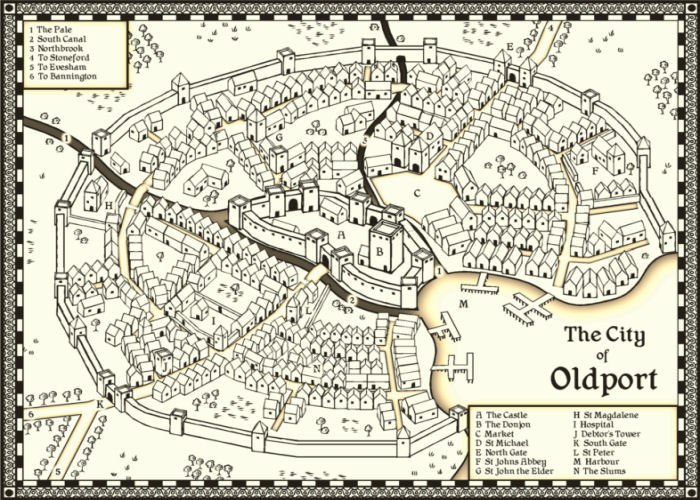
Strip maps such as those by John Ogilby are created to to chart roads and journeys, they are a perfect vehicle to convey a sense of travel and adventure for your players. These are both created using the Cartographer’s Annual Vol 3 Strip Map style.
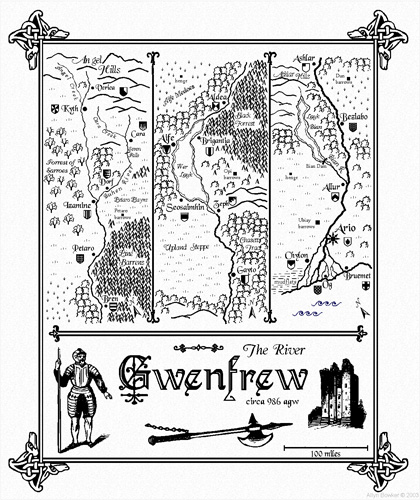
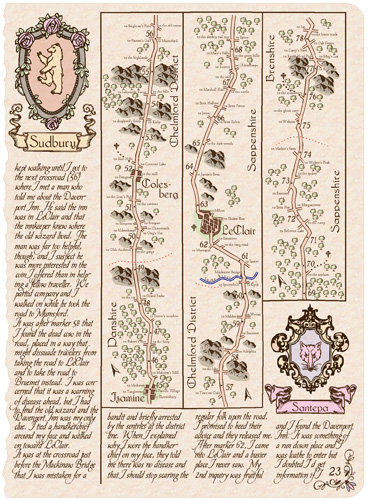
Perfect for Caribbean swashbucklers, use this style to map the hidden coves and tropical islands.
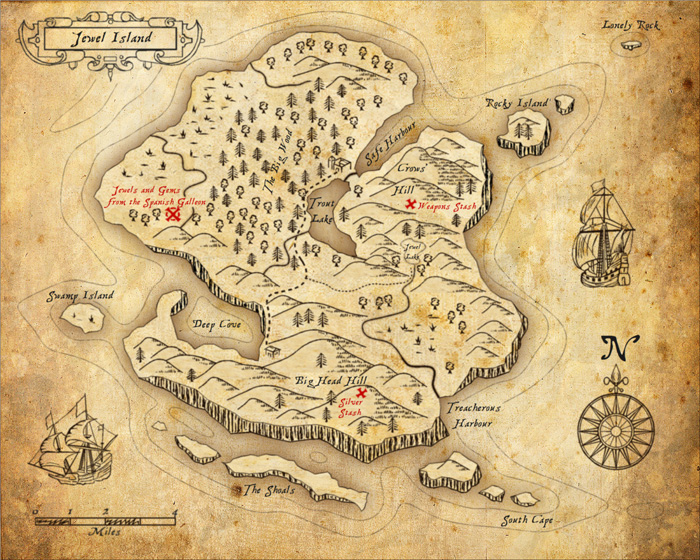
This style emulates classic deptictions of the battles fought in the Napoleonic wars of the late 18th and early 19th century. It is featured in The Cartographer’s Annual Vol 3.
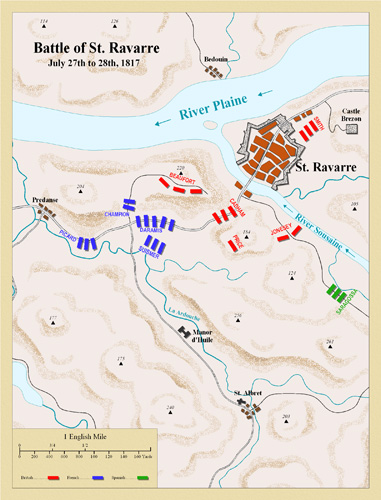
This style from the Annual Vol 5 is based on the 1920s and 1930s Baedeker guides.
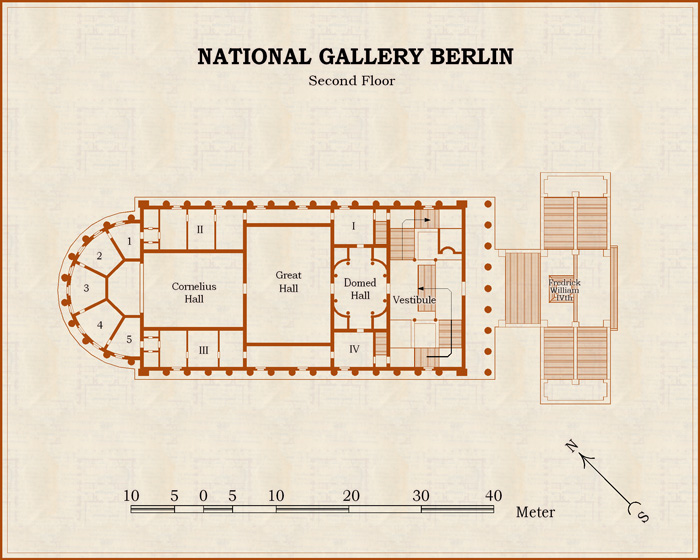
Also from the Annual Vol 5 is this matching street map style.

For overland maps in a 1930s style, there is this style from the Cartographer’s Annual Vol 7.
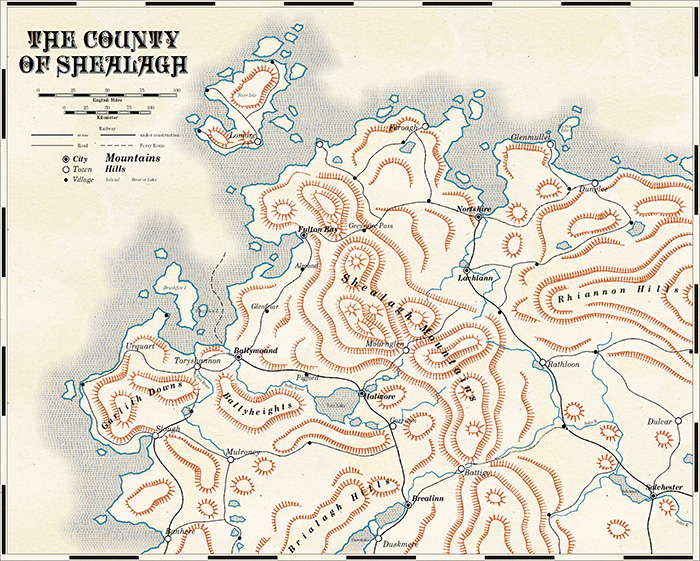
Comments Off on Historical Maps with CC3
Simon Rogers | April 14, 2014 | competition, dungeon
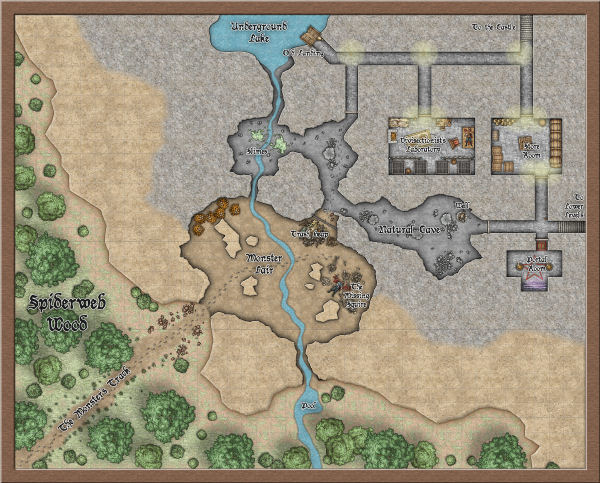 To celebrate the release of The Dungeons of Schley, we’ve devised a competition. Create a small underground lair – a bandit hide out, a cave taken over by a dragon, a mine used as a cultist HQ. The whole area the map covers including map embelishments should be no more than about 100 m / 300 ft square. The best will win an unlimited patron license to all our cartography software forever; two runners up will receive vouchers.
To celebrate the release of The Dungeons of Schley, we’ve devised a competition. Create a small underground lair – a bandit hide out, a cave taken over by a dragon, a mine used as a cultist HQ. The whole area the map covers including map embelishments should be no more than about 100 m / 300 ft square. The best will win an unlimited patron license to all our cartography software forever; two runners up will receive vouchers.
- It can be in any style, past, modern or future.
- You have to create it with CC3, and any other ProFantasy map-making software you wish to use – annuals, symbols sets, whatever you like,
- It can include third-party art as symbols or fill styles long as that art is available for commercial use by anyone.
- You grant us permission to post the map online, though you retain all other rights.
- Only one entry per person
- The main prize is an unlimited patron license, and the two runners up will receive $100 vouchers.
- To submit, post your entry on this forum thread.
- Competition closes on 14th June 2014.
1 Comment
Simon Rogers | April 14, 2014 | books, overland maps
From Tolkien’s seminal Lord of the Rings, to Lord Foul’s Bane and Game of Thrones, blockbusting fantasy novels need maps you can flick back to when following the journeys of the protagonists. The Fantasy Reader blog provides an index with wide selection of examples.
Campaign Cartographer has been used to illustrate novels such as Shades of Gray by Lisanne Norman, Le Temple Des Eaux-Mortes by Eric Ferris, and Johannes Cabal the Detective by Jonathan L. Howard, and writer David Brown discusses his experience with CC3 here.
So, which are the best CC3 styles to use to sketch a world for your frontispiece? Most likely it’s black and white line are, though greyscale might work. Here are some suitable suggestions for overland maps.
This prosaically named Overland B&W style is a perfect example of a simple style with which you can create a first fantasy map, It’s very straightforward to use.
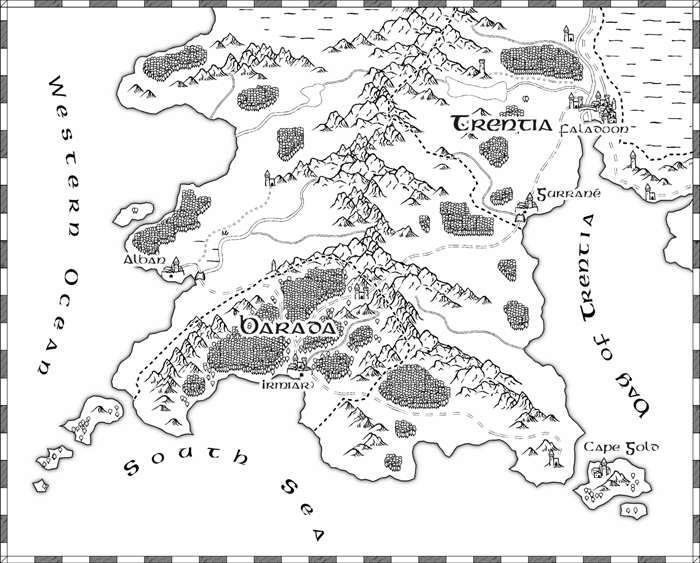
Annual 2008 Overland B&W Style
Simon Rogers | April 14, 2014 | Dungeons, Floorplans
ProFantasy Software offers a large, possibly even bewidering range of dungeon styles from which you can choose. All our add-ons, symbol sets and annual require Campaign Cartographer 3 to draw. Dungeon Designer 3 makes it easier to create dungeons, but isn’t required, except to use its own built-in styles. Here, then, is a selection of the some of the styles we offer and the software you need to use them.
Dungeon Designer 3 built-in style.
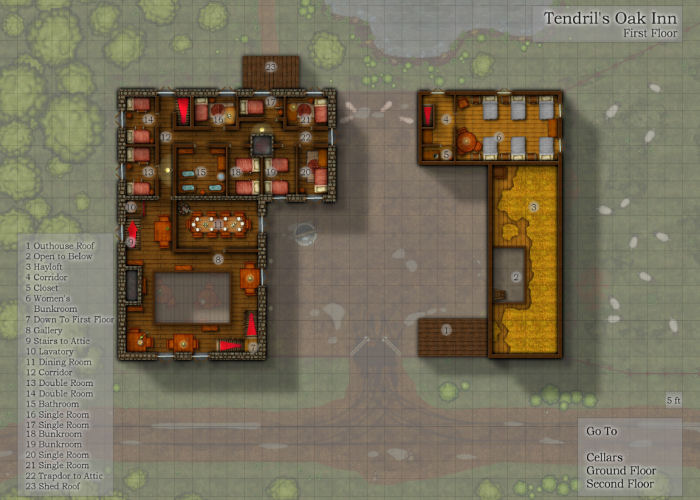
Continue reading »
Comments Off on Want to Create a Dungeon?
Simon Rogers | February 19, 2014 | dungeon, dungeons of schley, Mike Schley, symbol set
In February last year, Mark Fulford and I flew to Phoenix to meet CAD guru Mike Riddle and expert programmer and ProFantasy mainstay Peter Olsson. Serendipitously, cartography Mike Schley lives in Phoenix, so we agreed to meet.
By this stage Mike Schley was developing an overland map style for use in the forthcoming CC3+, but as a result of our conversation we also agreed that he would create an entirely new symbol set, too. It’s an unashemedly fantasy-oriented dungeon-bashing style, with the complete set of symbols you get with DD3 and Fantasy Floorplans.
We’ve kept this one under our hat, but we are now ready to announce, The Dungeons of Schley!
We’ve still got to do some work perfecting the effects to make it look just right, but here are some sneak peaks:
Click on the main dungeon map and symbol selection for a higher res version.

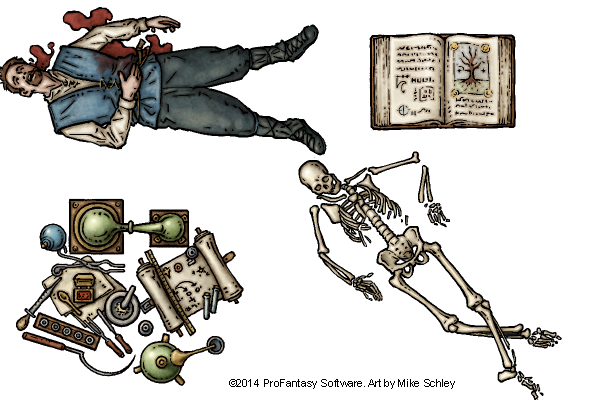
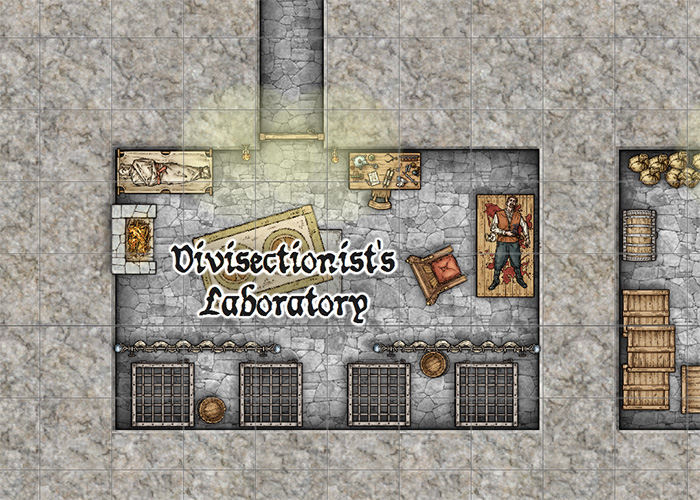
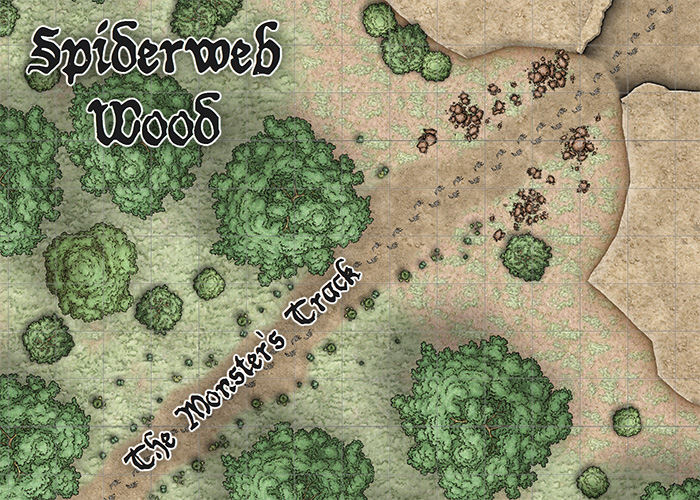
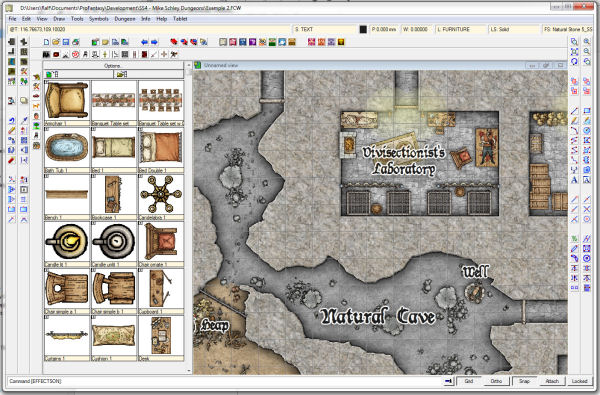
2 Comments
Simon Rogers | January 16, 2014 | competition, parton license
Create a map of an island, less than three miles wide. The prize? The best will win an unlimited patron license to all our cartography software forever.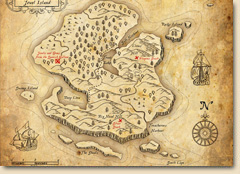
- It doesn’t have to feature treasure, and it can be in any style, past, modern or future.
- You don’t have to create it with CC3 but it must be originally created for this competition and not posted elsewhere.
- You grant us permission to post the map, though you retain all other rights
- Only one entry per person
- If there are more than three entries, and the winner is not an amateur, then there will be an additional prize (a voucher worth $100) to the best amateur.
- To submit, post your entry on this forum thread, or email us a file, no more than 2MB.
- Competition closes on 1st March 2014.
Good luck, cartographers!
3 Comments
Simon Rogers | January 16, 2014 |
We are very fortunate to have taken on Joe Slayton as a programmer for CC3+ work. From his free terrain general Wilbur, he created Fractal Terrains, now on its third version. You can get a better idea of his take on life and programming in this interview. He is a C and C++ expert and one of few people in the world who can work with the FastCAD code base and mass of additional code we’ve built up over the years. He’s already wowed our existing developers Mike Riddle and Peter Olsson with his innovative approach – doubling the speed of CC3+ effects just for a start. He’s also honed code which is tangled with age to make it more consistent and easy to read.
Using Joe’s Fractal Terrains 3 is more like exploring an apparently infinite set of worlds than creating them from scratch, and the process of discovery makes the imaginary worlds it creates makes them more real. Just for example, here is something I knocked out while playing with FT3 and exporting into CC3. It took about fifteen minutes. I used Ralf’s Jhendor colour scheme with Roughness, Percent Sea and Large Size sliders a little over to the right, and I spotted this rather appealing island. I added rivers at custom resolution, then a bevel and blur on the coast in CC3.
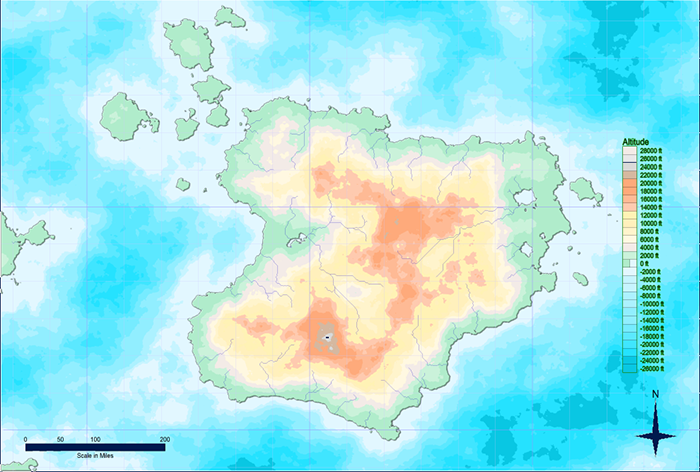
Ralf has also used FT3 to create a campaign world, Jhendor. Here is a sample output from FT3.
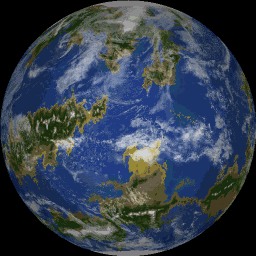
So, if you are interested in world building, exploring variations on the real universe, or just starting from a billiard ball you can try the demo here.
3 Comments
Simon Rogers | January 14, 2014 | cartographers, CC3, CC3 Plus, development, history, Mike Schley
CC3+ incorporates a new complete symbol set from expert cartographer Mike Schley. We’ve worked with a number of professional cartographers to create Campaign Cartographer styles, and the process is now pretty slick. We are either adapting an existing style (as with our recent World War 2 annual issue) or creating one from scratch. This is the process:
1. We take a cartographer’s existing map, or the cartographer develops a new map style, always by creating a small map sample. Here is an early one Mike Schley produced for the new CC3+ overland style.
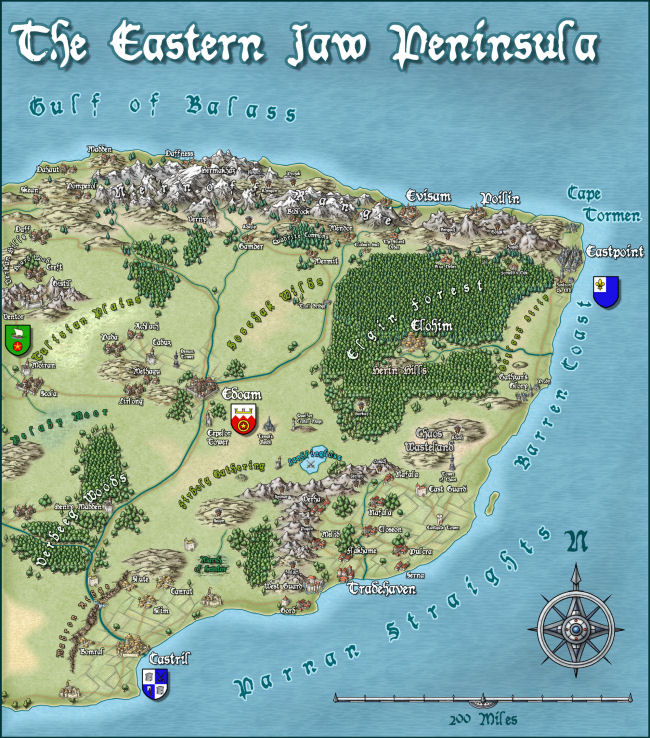
2. Once we’ve approved this, the cartographer adds more symbols and tools to the example map, and then does more as stand alone files. For a full ad–on or symbol set, this is a very big job. Usually the cartographer works in Photoshop, with layers on, so we can easily extract elements to create CC symbols and drawing tools.
3. Once the map-maker has finished, Ralf duplicates the style in CC, developing the set of drawing tools and adding effects to match the original.
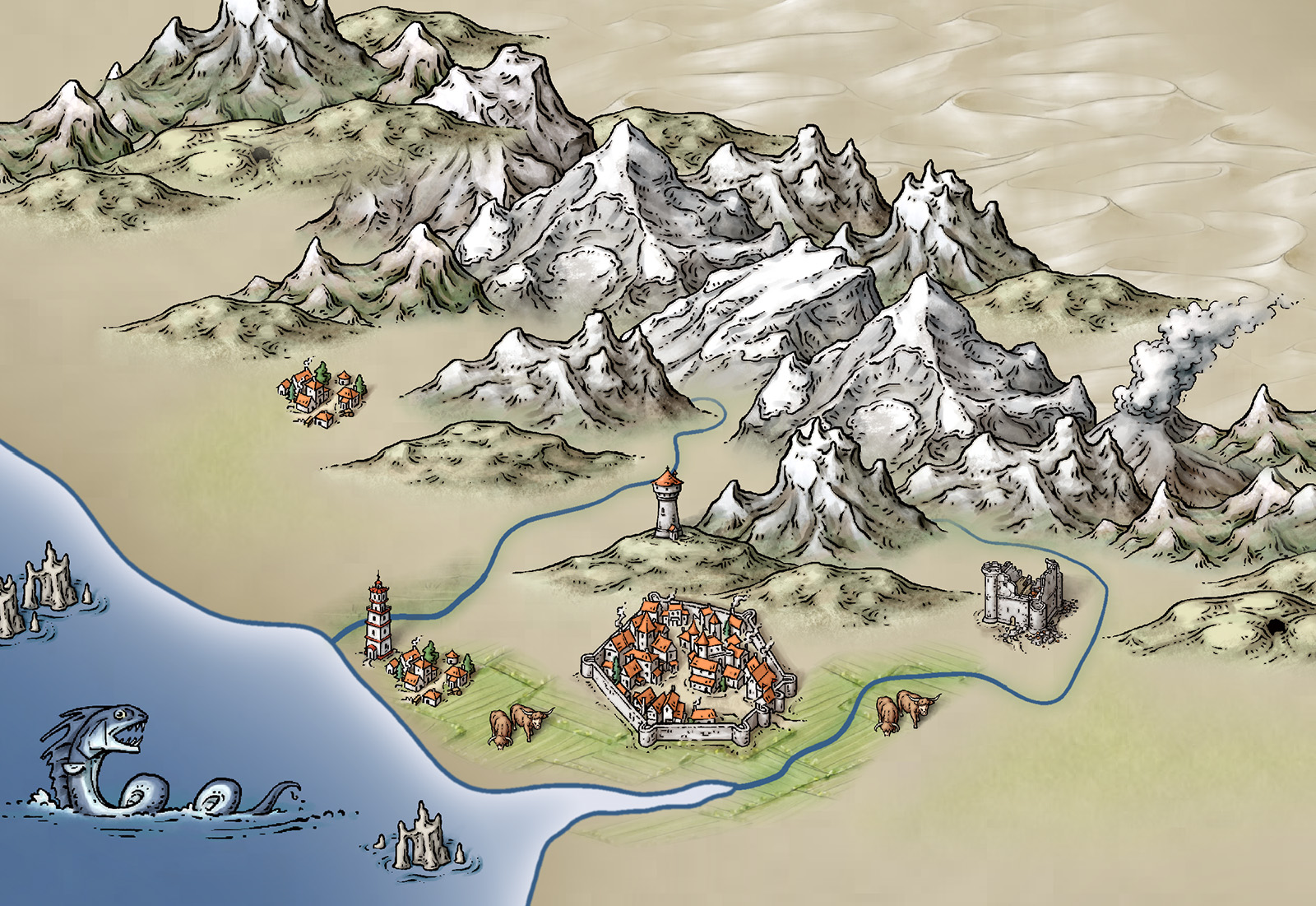
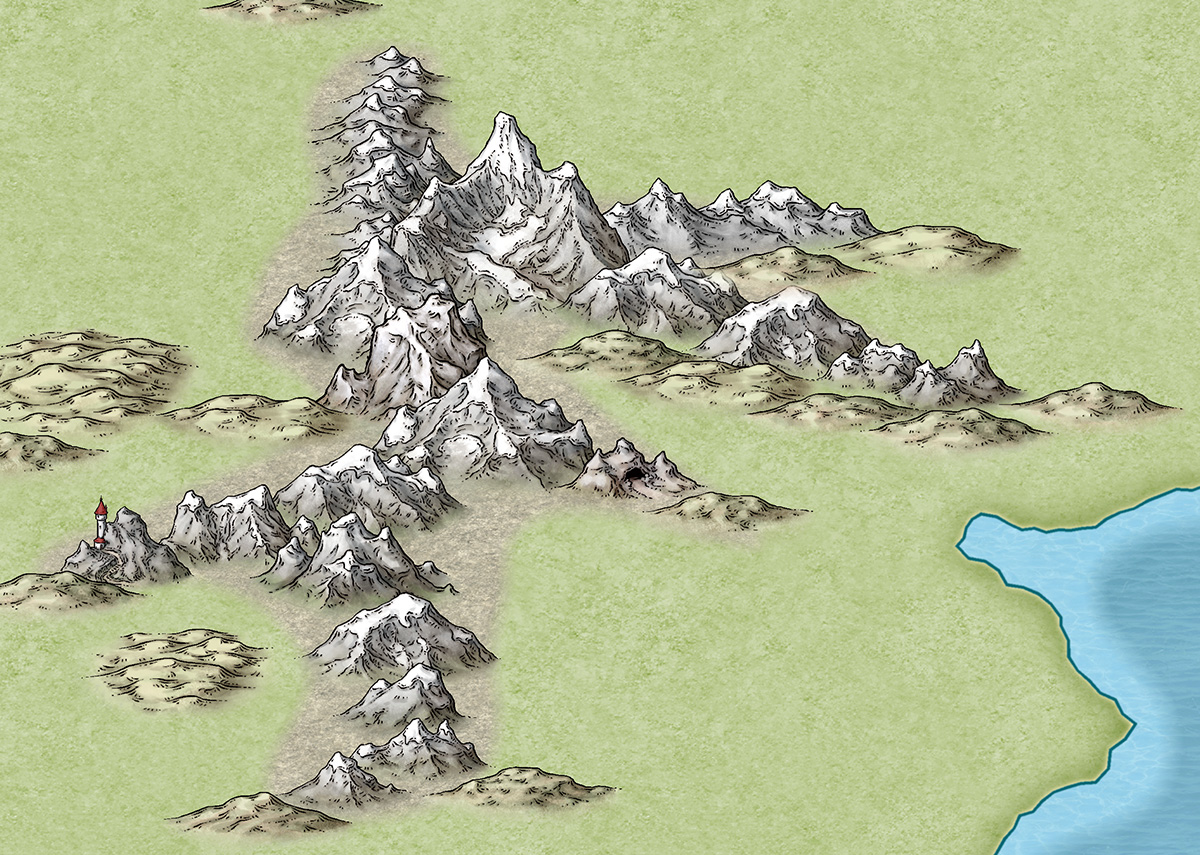
4. Ralf creates the full set of symbol catalogs in all resolutions, with varicolour areas.
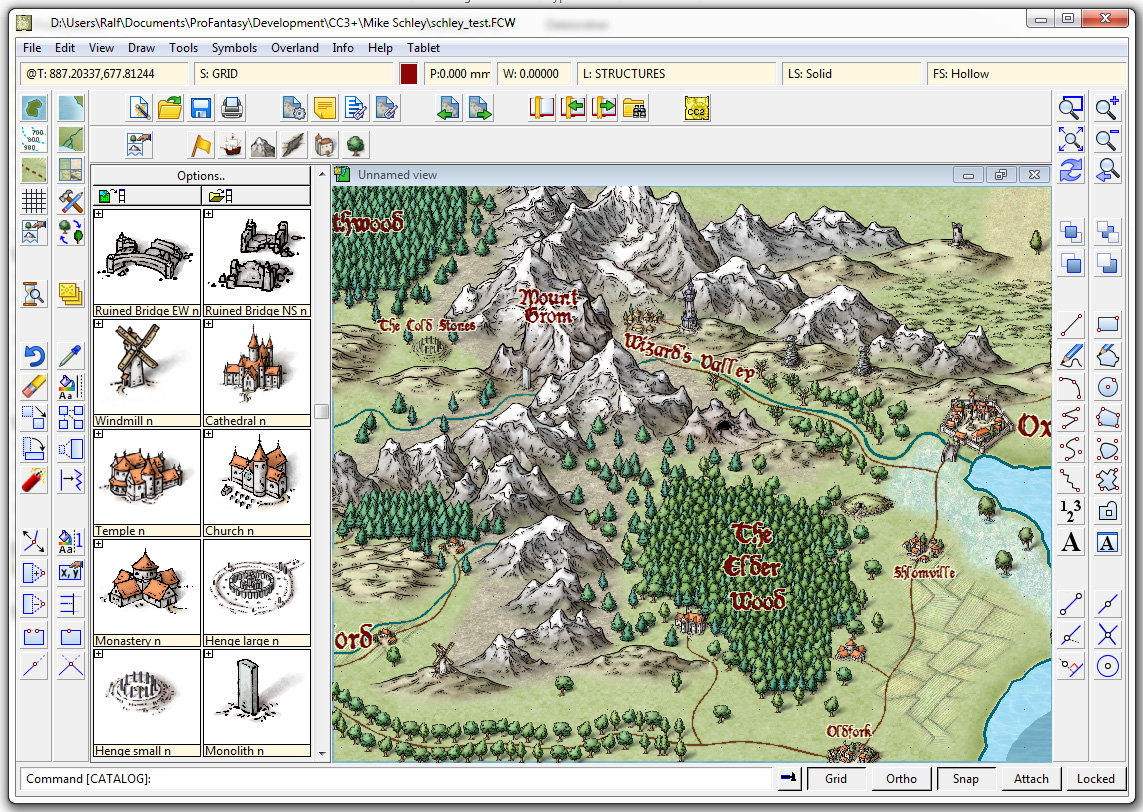
The very first example map we did with Campaign Cartographer was of my campaign setting, the Jaw Peninsula, and we intend to continue this tradition with CC3+. You can see the history of the map here and Ralf has rendered the eastern section of the map in his new style. Click the image for the full high-resolution map.

And here is a close up

And just to give you an idea of how detailed the symbols are – little works of art – here is a close up. Click for extreme close up.
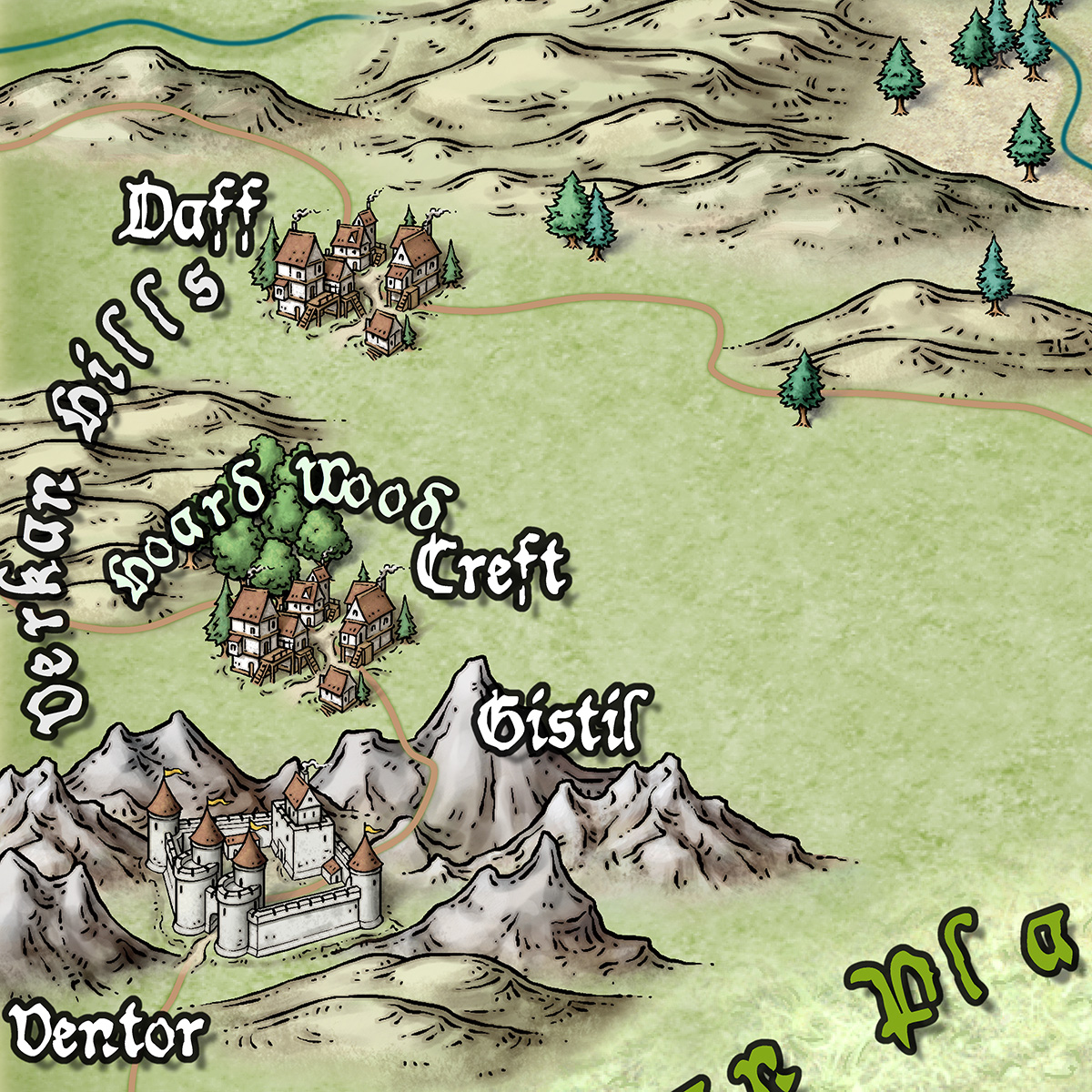
2 Comments
Simon Rogers | December 23, 2013 |
Character Artist 3 is out now!
Character Artist 3 lets you create attractive, high-quality portraits of characters for your games. When you’ve made your character, you can place a high-quality image onto your character sheet. You can add your portraits to counters, create silhouettes or make stand-up card figures.
Emails have gone out to all existing ProFantasy customers who haven’t opted out with a discount offer, an in addition, if you are an existing CC3 customer then until 1st January 2014, Character Artist 3 includes an upgrade to the next version of Campaign Cartographer 3 when it’s released in 2014.
CC3+, to be released in 2014, will be twice as fast as CC3, easier to use, and include a new map style and amazing effects.
Comments Off on Character Artist 3 Out Now





















 To celebrate the release of The Dungeons of Schley, we’ve devised a competition. Create a small underground lair – a bandit hide out, a cave taken over by a dragon, a mine used as a cultist HQ. The whole area the map covers including map embelishments should be no more than about 100 m / 300 ft square. The best will win an unlimited patron license to all our cartography software forever; two runners up will receive vouchers.
To celebrate the release of The Dungeons of Schley, we’ve devised a competition. Create a small underground lair – a bandit hide out, a cave taken over by a dragon, a mine used as a cultist HQ. The whole area the map covers including map embelishments should be no more than about 100 m / 300 ft square. The best will win an unlimited patron license to all our cartography software forever; two runners up will receive vouchers.
















